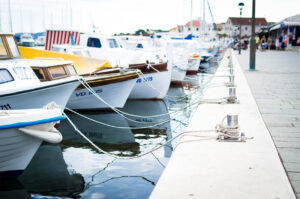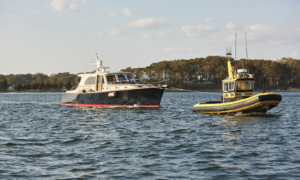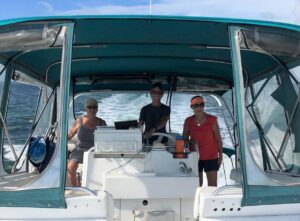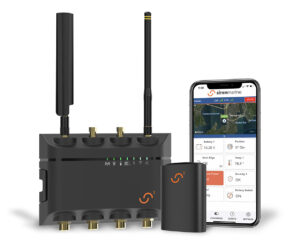Properly maintaining a boat can be a daunting task, yet most boat owners keep up with the major items fairly well. It’s the small less obvious items that tend to get overlooked. One particular small item left unattended can have disastrous consequences — the thru-hull, seacock, sea water strainer assembly.
For as long as boat insurance companies have been keeping statistics, the numbers haven’t changed, approximately 50% of boats that sink in their slip are caused by leaks in underwater fittings. Many of these unnecessary accidents are caused by failed thru-hull fittings, seacock valves, sea water strainers or the associated hoses or hose clamps.
The thru-hull to sea water strainer assembly serves the critical task of providing coolant water to many on-board devices like engines, generators and air conditioning systems. Left unmaintained at best they will cause an overheating condition and at worst — sink your boat! The first order is to know how many you have and locate each of these aboard your boat.
Beginning with the thru-hull, which is a very simple device with no moving parts. They are made of bronze or a reinforced polymer. Regardless of the material, they should be inspected at every hull-out for proper bedding and material integrity or degradation.
Next is the seacock valve, these valves not only allow water into the boat, they most importantly allow us to close off that flow of water when needed. If not regularly opened and closed, an unused seacock can freeze in the open position, preventing you from closing it in the event of a hose or component failure.
Next is the sea water strainer, these should be visually inspected monthly and opened and cleaned quarterly. Increase the frequency of visual inspections and clean-outs if the boat is used in an area with heavy concentrations of sea grass.
Inspecting the seacock/sea water strainer assembly most importantly consists of looking at hoses and hose clamp connections for hose wear and loose or corroded clamps; of course, all hoses should be double clamped. While rarely provided by boat manufacturers, t-bolt style marine grade hose clamps or better suited to this application. The typical slotted worm-gear style hose clamps secure with less uniform pressure and are more prone to failure. Replacing the worm-gear hose clamps with the t-bolt style is a simple and inexpensive upgrade to all thru-hull hose connections below the waterline. Many seacocks and sea water strainers will also be connected to the boats grounding system. Inspect grounding wire connections for secure attachment. Utilizing a multimeter in resistance mode will confirm continuity in the grounding wire circuit.
Opening and cleaning the sea water strainer begins with closing the associated seacock. This regular action of closing and opening the seacock also performs the important task of exercising the valve to assure it can always be closed. It is helpful to draw an arrow on the seacock valve handle indicating the direction of closure. Even properly working valves can be stiff and require some effort to open and close. In the event of a component failure and water coming into the boat, you don’t want to be uncertain which way to turn the valve to close it.
With the seacock valve closed, open the sea water strainer housing to access the strainer basket. Some strainers require special spanner wrenches to open, be sure to keep these easily accessible. Even with the seacock closed, water in the hoses and parts of the cooling system will drain out when opening the strainer housing. A wet-vac is handy to catch the water when opening the strainer. The strainer basket should lift straight out and allow for cleaning. This is where most boaters put the strainer back in and close everything back up, but the project is at best only half complete. The strainer basket catches large debris, but sediment will collect in the bottom of the basket housing and coat the inside of the glass. This makes visual inspections more difficult and less valuable in between cleanings. While the basket is out, use the wet-vac to finish removing the rest of the water from the basket housing. A combination of a toilet bowl brush and the wet-vac work great for cleaning the inside of the housing. A dry clean sea strainer housing can now be thoroughly inspected inside and out for damage or deterioration.
When reassembling, place the clean strainer basket back in place. Most sea water strainer housings have an o-ring or gasket creating a water tight seal at the lid. Inspect and replace this item as needed in order to prevent leaks at the lid. On strainers with hinged lids, while the strainer is opened, inspect the hinges, studs and locking nuts for corrosion or weakness. This inspection and cleaning process provides a great deal of satisfaction and security in maintaining and protecting your boat.





